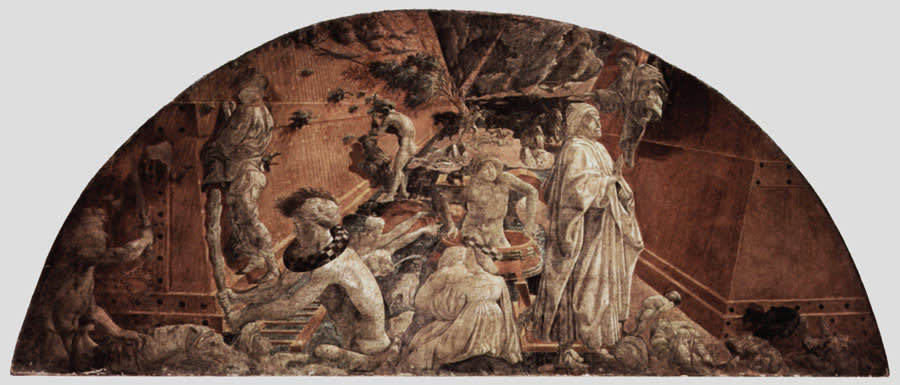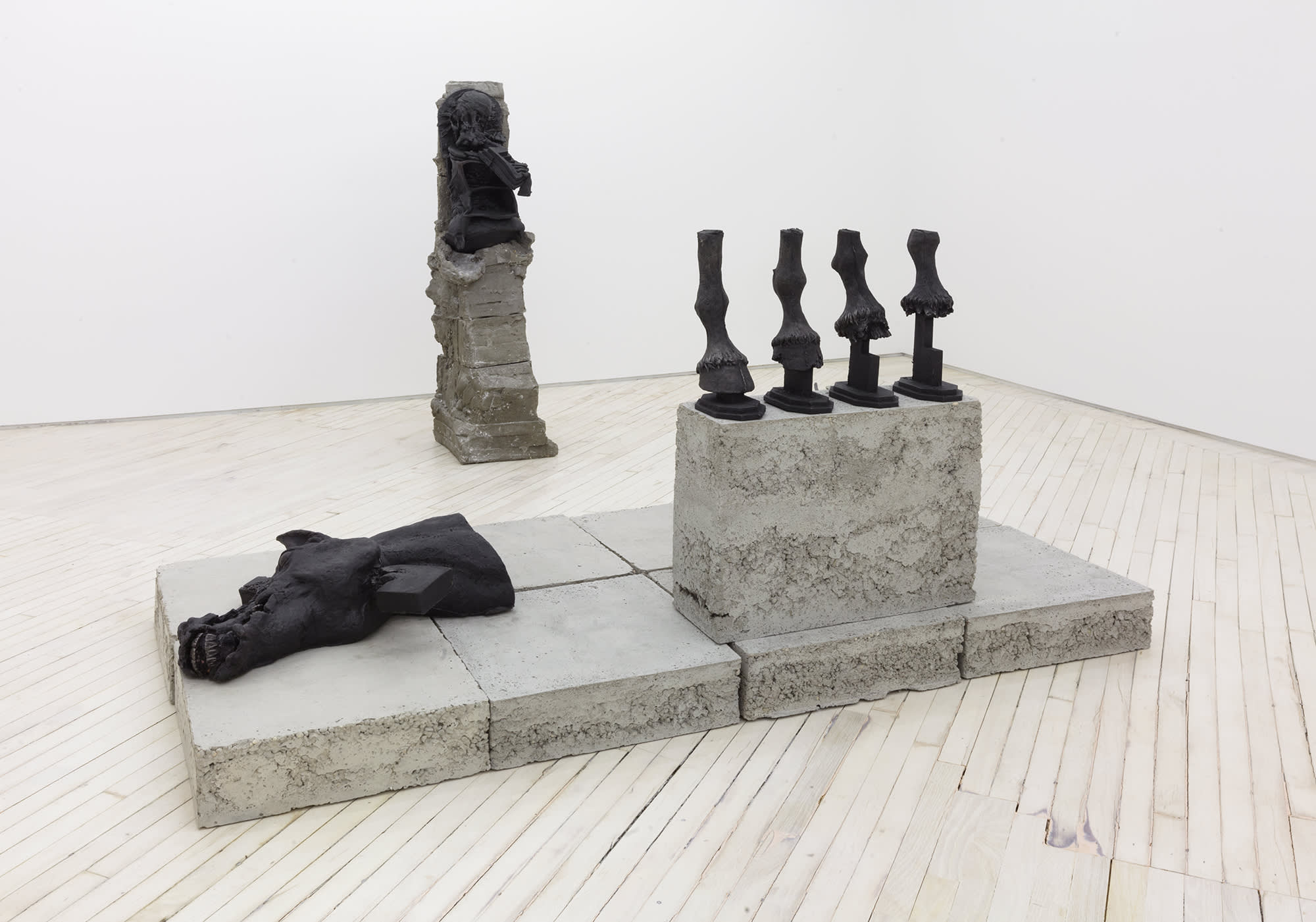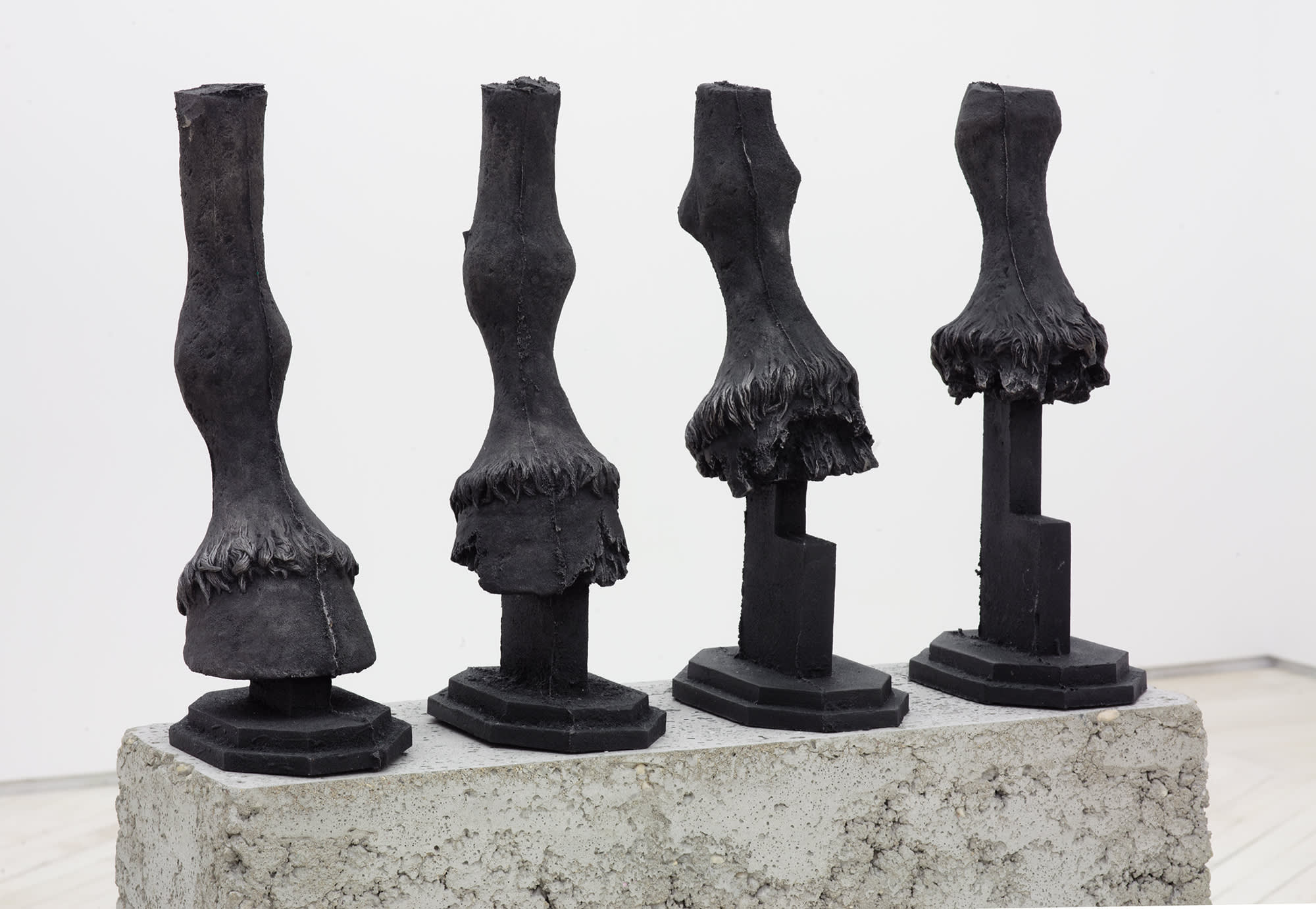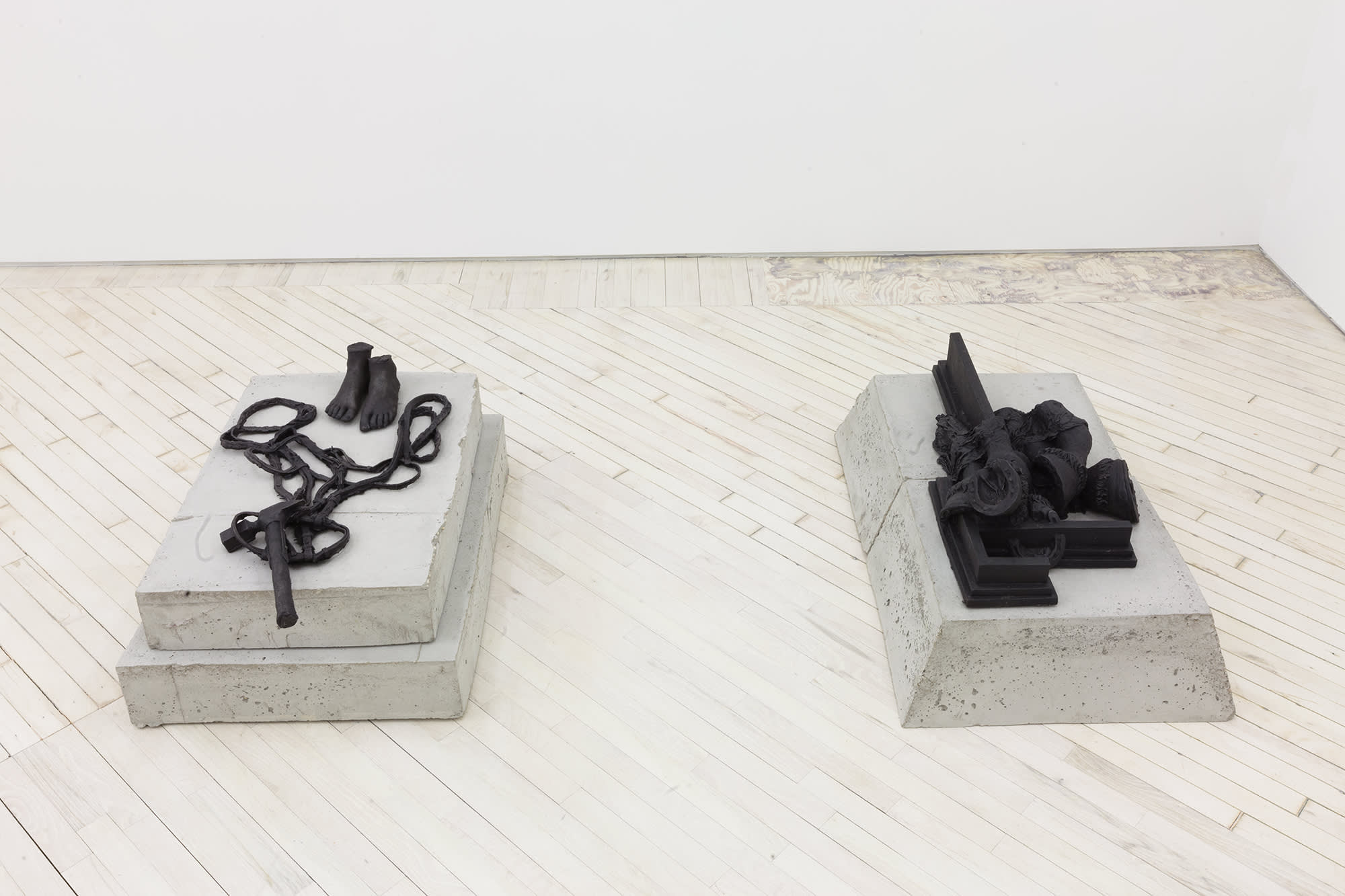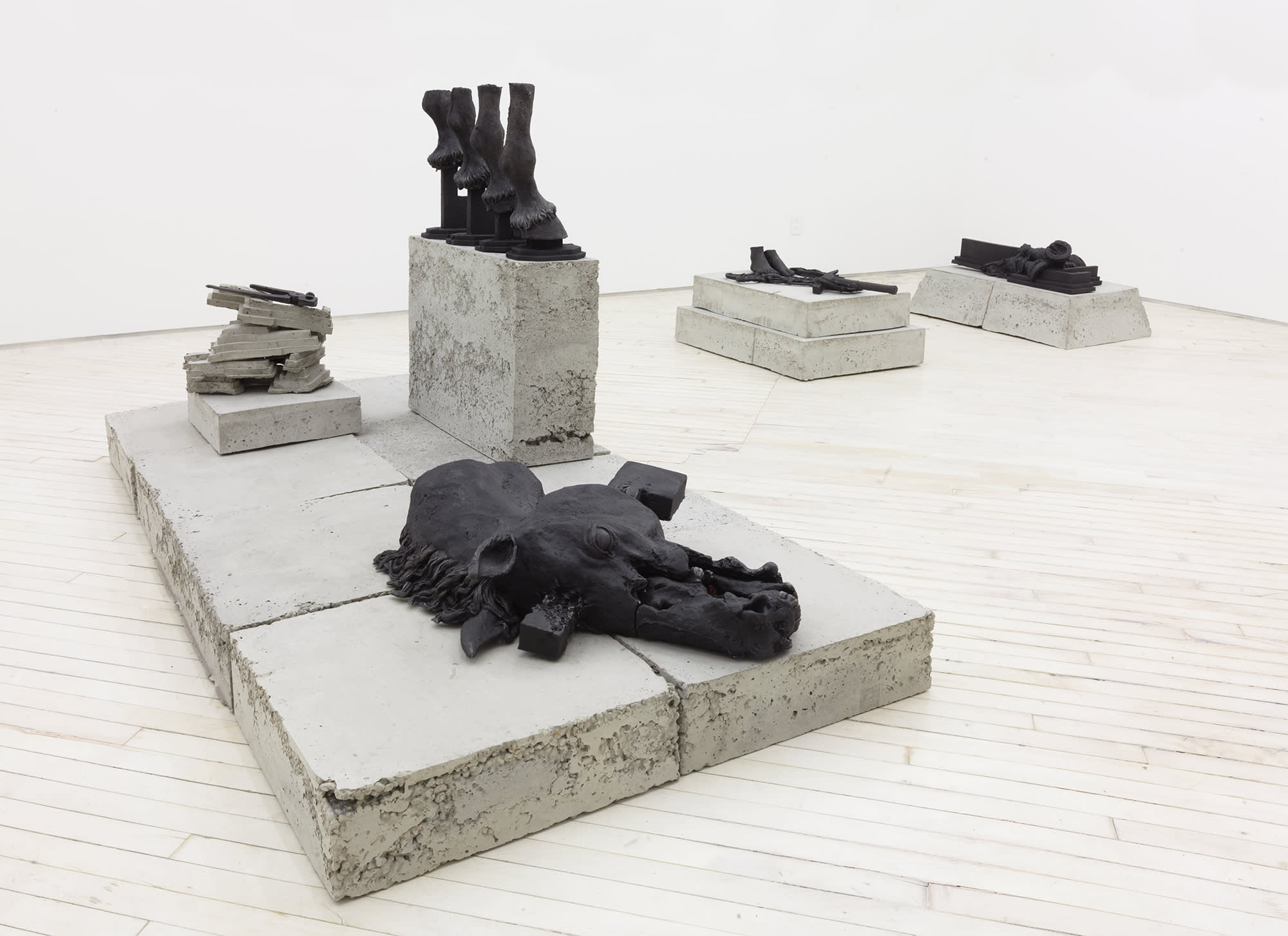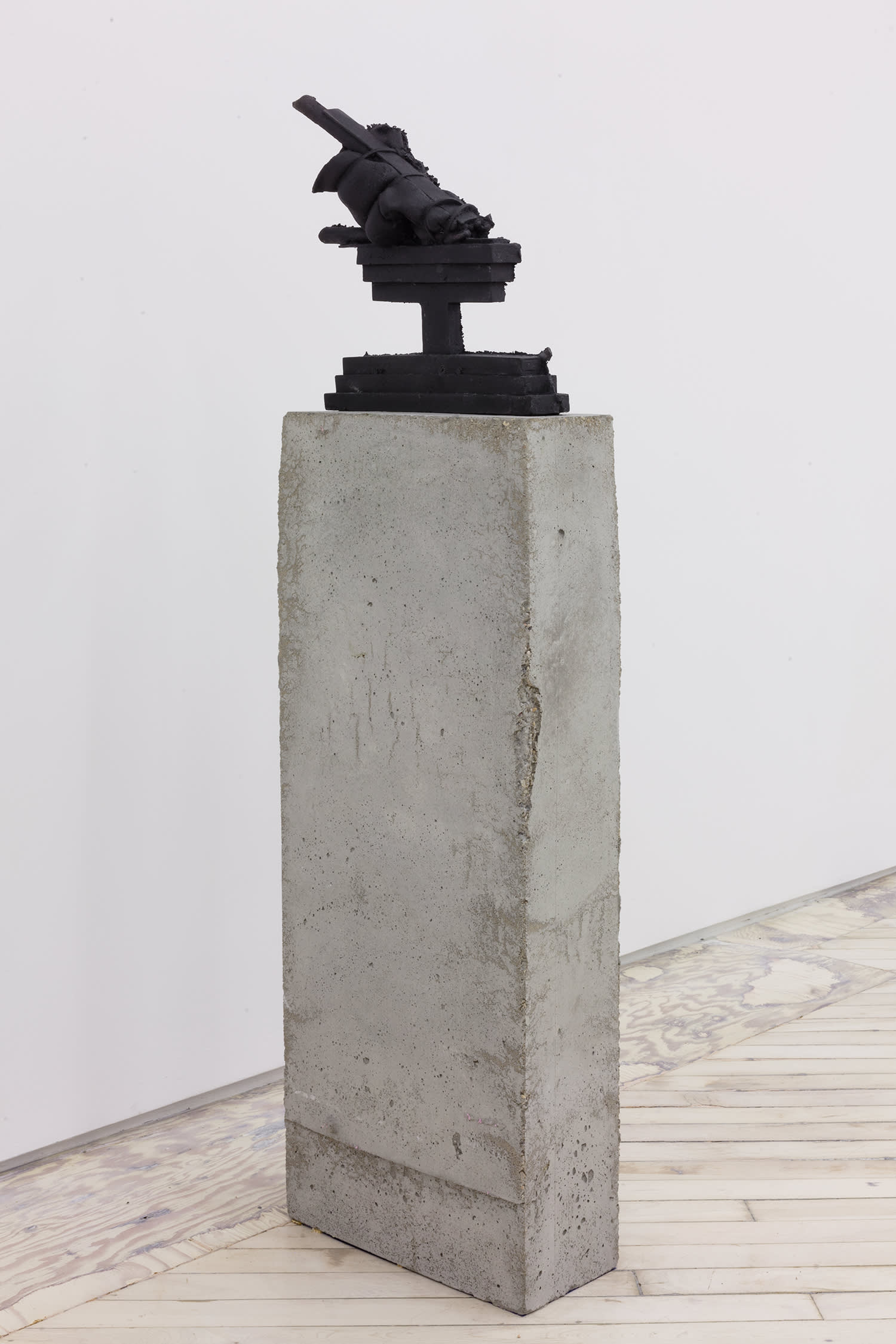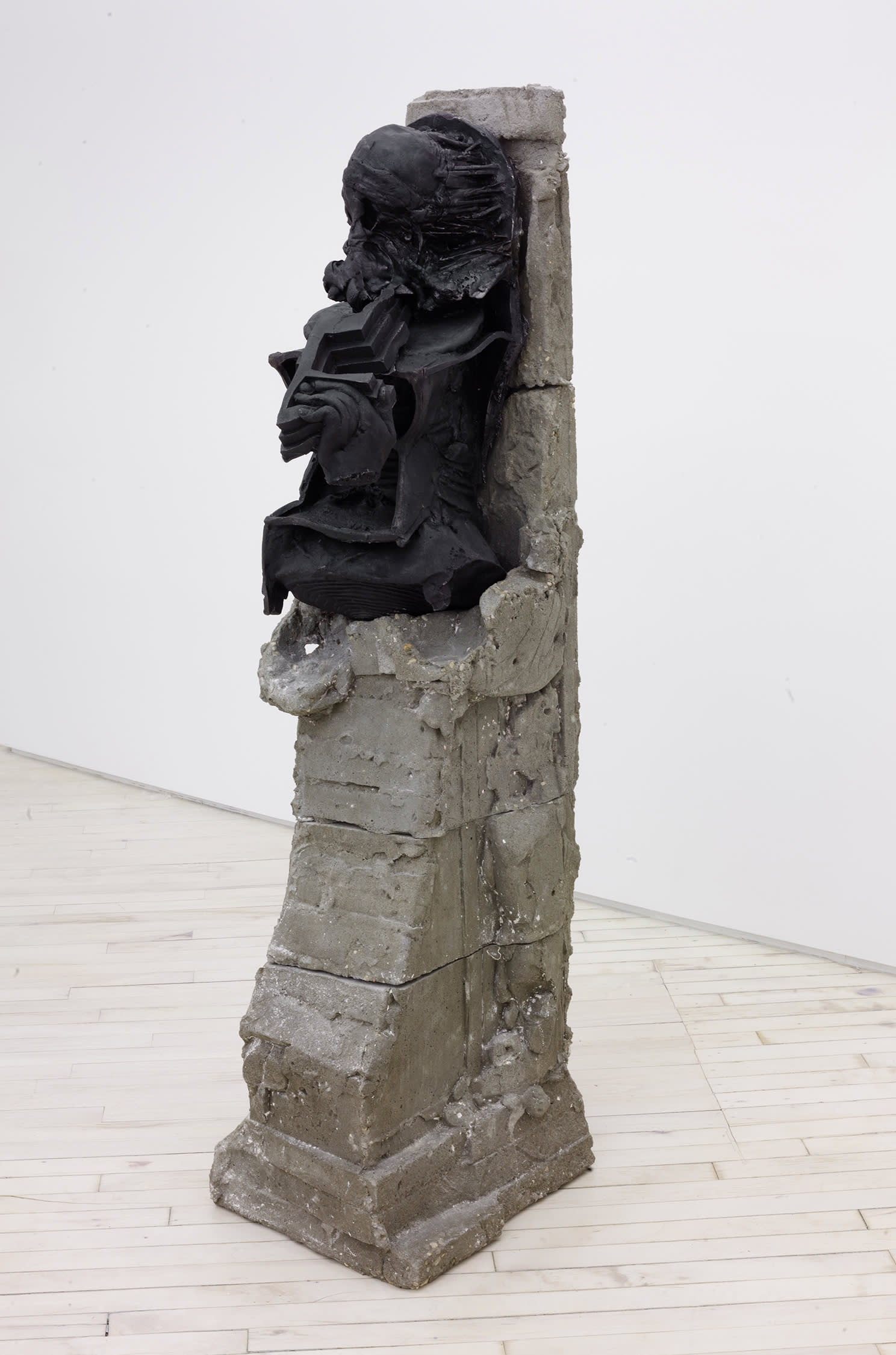Exhibition: Deluge
Lionel Maunz Deluge January 12 - February 9 2014
Time Out New York GalleristNY Art in America, Matthew Shen Goodman THE SEEN Cura Magazine Art in America, Diana Kamin
Bureau is pleased to announce Deluge, Lionel Maunz's third solo exhibition for the gallery. On the occasion of this exhibition an interview was conducted with the artist, an excerpt of which appears below.
GG: This show takes its title directly from a specific work of art: 'The Deluge' by Paolo Uccello. It is a scene of destruction and chaos around the Ark showing drowning and foreshortened bodies looking for salvation from Noah. I always love Uccello for his uncompromising use of geometry and systems of perspective.
LM: In Uccello's work perspective is a geometric barbarity. Narrative and figuration are both incidental to this unrelenting principle of linear constraint which in this painting forms a frame within which cruelties are acted out. In the fresco you have the Ark, which frames both sides of the painting in tapering walls of a trapezoid. On the left, we see action taking place during the flood, showing desperate situations of violence. On the right, are scenes from after the flood: the ground littered by bloated, dying bodies. The Ark walls frame the scene, making it an interior. It's a reversal which situates all the violence inside the Ark, not as a place of salvation but as a tomb.
I've been obsessed with this Uccello painting since I first saw it in reproduction, and got a chance to see it in person in 1999. What excites me about it is the conversion of fear to violence: a coalescing of terror into this desperate spasm of ruin. I look at the fresco and want to agitate, to exacerbate it, to ensure that nothing is spared.
I had a lot of reservations in using such a direct, classical reference, for fear that I was giving myself and the viewer too firm a footing. That said, I like referencing the forced perspective of the Ark. It's an architecture that hems in and restrains: the idea of a calculus of oppression. Architecture can be an articulate approach: consolidating not just the body and its activity but also memory, rendering an inert residue. Architecture infected by experience. Specific rooms and buildings are more clear to me than the memory of my body in them.
GG: Several works in the new exhibition include mutilated or decaying body parts of a horse. The mutilation of a horse could be seen as a small, pathetic or sadistic gesture because it is directed at a broken animal that has been perpetually tamed for human implementation.
LM: The horse plays a prominent role in Uccello's Deluge in which a drowning horse and rider is being attacked by a man with a club. One of the larger pieces in my show is a concrete plinth with cast iron elements including a large, mutilated horse head struck through the center with a geometric form. The piece also contains a series of rotting hooves, farrier's pliers and a stack of crude architectural models of the apartments and trailers where I grew up. The horse is this wild force that is harnessed for war and dominance and a tool that pulls the plow: a dumb animal that's been broken, taught, and has learned its place and stupidly complies. I suppose I'm equating domestication and stabling with learning. This is a real tension for me, the animal/child relationship. There's something about the mimicry, the learning, the inherited ambitions which create an irreconcilable problem. Custodians, parents, trainers pouring effluvium into tiny funnels, valves without scrutiny. Here innocence is an object of scorn.
My interest in horses came from an accumulation of references which I guess I'm trying to interrogate with this show. Some of these references include accounts of striking instances of neglect on farms, satanic ritual abuse of horses. Nietzsche's tears, Raskolnikov's dream, Ashvamedha. And references to violence against horses in Peter Sotos's work. I recently read The Horseman, an account of a zoophile, which adds another facet to this complex of references.
The horse is an incredibly powerful animal so there is a funereal grandeur in its murder, coupled with as you say a smallness. I don't want to talk about brutality in generalized terms, I see the horse and its references as a way to narrow the scope: trying to get at a specific aspect of brutality and violence. That an act can be so stripped down and raw that it can't be further harmed, critiqued or judged. I think this is close to purity.
GG: Going back to Uccello's strict use of logic and geometry, in your work there has also always been specific implementation of line and direction. The lines often imply a reversal or a downward direction, suggesting a subterranean realm or a descent.
LM: The strict use of direction in the work is a desire for specificity. A move away from completion into smaller, more important definitions. A downward pointed cone. I'm not interested in expansion, rather cutting away, further focusing an already narrow perspective. The strata, the tiers in the work were originally a reference to the geologic, an approach to this explosive, violent interior.
In Uccello's painting there is a drowning man clutching at Noah's ankles. One thing I hate about this painting is the central figure of Noah praying, thanking god for his salvation. I thought to substitute Noah for the Saturnian figure reveling in the cataclysm. Which is also me. One of the pieces in my show is an inversion of this scene: a foot crushing a hand, pushing it down, ending rather than saving. GG: The body has always been an important facet of the work, either the body of the viewer literally walking into an environment, as with your first solo show, 'Wail Eternal', or with the grave form and implied prostrate figure in your second show, 'Receipt of Malice'. How does the figure and the affiliated shifting of scale around the sculptural form operate within your work?
LM: The work has always been figurative. This fulminating, grinding, butchered thing. But it's difficult depicting the figure, or adequately getting at this impossible, traumatized pulsation of experience. I would hate to wallow in representation if it meant squandering cruelty in favor of communication. So in the earlier work the figure was anyone engaging the work, while the work itself was the deforming principles of existence. Gradually, in fragments, the represented body has become a larger presence. If you think of the first show as the external forces that assault the body, the second show as the assaulted body, then this show is the assaulting body.
(December 2013)
